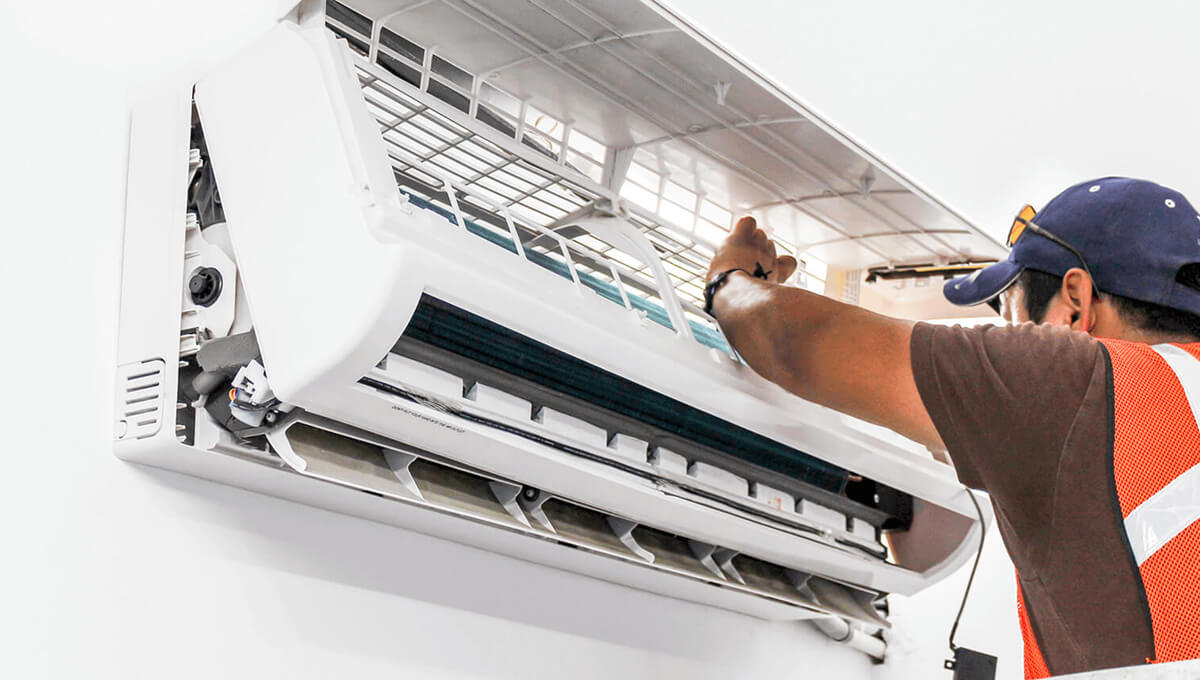HVAC/ Air Conditioner – 4 Basics Parts You Must Know Before You Call Your Technician

Have you ever walked into a room or store on a real hot day just to find it super cool?
Heating, Ventilation, and Air-Conditioning (HVAC), mostly only known as AC, has revolutionized homes, offices, tower blocks, and car interiors worldwide.
You can now enjoy the temperature of your choice in the comfort of those places and many more where Air-Conditioning may be installed. For colder regions, decentralised heat recovery systems are recommended.
Like any other equipment, your air-con will require AC repair services or maintenance for it to function according to the manufacturing requirements.
It’s always good to have basic knowledge about how your Ac works so that you can be able to make a correct decision should an AC situation arise. Your Air-Conditioning system is designed to absorb heat from inside your home and transfer it outside.
This process is achieved by the use of a cooling agent or “refrigerant” inside coils intertwined through a closed system. These coils guide the cooling agent from inside your home and back again.
Demystifying your Air-Conditioning system begins with just four significant components regardless of the type of installation: evaporator, compressor, condenser, and expansion valve.
Evaporator
The evaporator, also known as “evaporator core,” collects heat from the interior through a refrigerant gas. When made of A-shaped web of copper coils, the evaporator contains low- pressure cold liquid refrigerant (heat transfer fluid), which absorbs the heat from the air, converting it into a high- pressure gas.
That simply means that as the warm air passes over the evaporator coils, the heat transfer fluid absorbs all of the heat resulting in cold dehumidified air that is then blown into your home.
The evaporator coil is the part of your AC responsible for cooling the air before it is blown into your home or car. The evaporator coil is located near the air handler at the fan area and is covered by a metal case.
Several signs could indicate that your evaporator is not working well, these include; ac temperatures may vary, notice a strange odor when the system is in use, the ac compressor will not activate.
Compressor
The compressor is the part of the Air-Conditioner, where compression of the gaseous refrigerant takes place. Also known as vapor compressors, this part of the AC is not designed to contain liquids in which case are not compressible.
It reduces the volume of the gas by squeezing it very tightly between two solid objects, which raises both the pressure and temperature of the vapor refrigerant emitted from the evaporator coil.
Since high-pressure fluids flow toward lower pressure fluid, the coolant from the compressor then flows back to the lower pressure refrigerant in the evaporator coil to enable the cooling cycle to continue.
Some of the indications that your compressor is failing include; warm air, low refrigerant, overheating, and loud noise coming from the outside unit.
Condenser
The condenser is a set of coils that receive the vaporized refrigerant from the compressor and the other for the liquid refrigerant leaving the section. It is located in the outdoor unit.
The coolant reaches the condenser in its hottest vapor form. A fan blows over these coils expelling the heat from the vapor refrigerant and converting it back to liquid form.
The liquid is sent back inside to start the process once more. The condenser is responsible for cooling the coolant, without which the AC system would not work.
The symptom of a malfunctioning AC condenser is that of chilly air coming from the vent and a burning smell when the AC is turned on.
Expansion Valve
The expansion valve, also known as the throttling device, is a part of the AC that removes pressure from the liquid refrigerant. It also controls refrigerant flow to the evaporator from the condenser and compressor.
Since it is located between chilled coils of the evaporator and the hot coils of the capacitor, the device allows liquid to be changed to a vapor and back to cash again.
It also controls the movement of refrigerant towards the evaporator. The liquid refrigerant is usually at its most refreshing when it enters the evaporator valve through the expansion valve.
The signs of a lousy Expansion valve include frozen tubes and continuous running of the Air conditioner that doesn’t shut down at the required time or makes unfamiliar sounds.
It is essential to have scheduled annual professional maintenance for your HVAC system because dust and dirt could cause build up around the evaporator coils. Poorly maintained AC would lead to high electrical bills and shorter life span.









